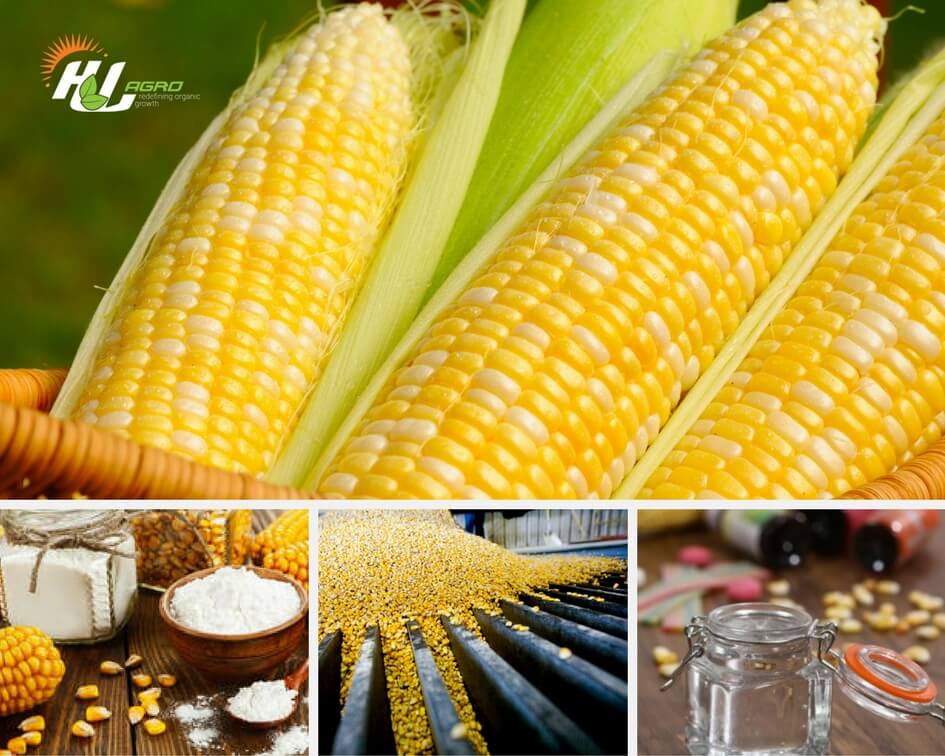Starch production in India is highly fragmented, with a variety of manufacturers offering different sources, grades and derivatives of starch as per their distinctive capacity levels. The Indian starch and derivatives market scenario has witnessed significant changes in the last few years. The Indian starch industry looks promising with many large players investing in the quality of starches and derivatives. Starch processing is one of the top five food processing industries in India with a significant history of high employment, food product growth and food infrastructure developments. Maize is the major raw material used to produce starches and the derivatives.
The growing consumption of convenience foods and the healthy year-on-year growth in the paper and textile industries are creating highly a fertile ground for the growth in corn starch sales across the world, but particularly in the Asia Pacific region. Starch derivatives, including glucose syrup and HFCS, are used widely across many industries. After facing a slow-down following the global financial collapse in 2008, the starch industry has performed well in the last 8 to 10 years. While agricultural policy changes and shifting barriers to trade are often perceived to be factors of change in the business, they tend to be of secondary importance since they are often an attempt to protect local interests from the pressures in supply/demand that is brought about by these differences in growth patterns.
Over the years, the number of corn wet millers has grown significantly due to capacity additions as well as new entities with 150 TPD (tons per day) and 300 TPD milling capacities coming on stream in the recent past.
Primary starch production grew at a CAGR of 19 percent between the years 2010/11 to 2017-18. However, not all the capacities are being utilized and currently as per an estimate, the average capacity utilization is approximately less than 70 percent.
Supply
India does not import any of the native starches. However, historically up to 25 percent of primary starches were exported as of 2017. The major export destinations are the African and the Middle-East countries. The supply situation for Indian starch and derivatives products is booming at the rate of 10% CAGR during the year 2017-18 as compared to 2015-16.
In India, the major portion of production capacity is utilized for processing native maize starch followed by modified starch, sweeteners & nominal part is allocated to polyols. Native starch is not imported and only modified starches and polyols are imported. With the evolving scenario in domestic demand, application expertise in food and non-food sectors will play a key role for suppliers to sustain corn wet milling operations. Joint ventures, in a limited way, will trigger consolidation within small and medium-sized corn wet millers.
Capacity additions for corn wet millers during the period 2018-19 will be 1500 to 1800 tonnes, which is expected not only to meet the rising demands but also for exports.
Demand
The demand for corn starch & starch derivatives looks very promising in India as all the major user segments of starches and derivatives are showing near double-digit growth in their production. The major users of starches and derivatives are food, textile, paper, and pharma sectors.
The most interesting and promising of all the sectors is the high-value food processing industry where the demand for starches and derivatives is in a nascent stage, but strong. The demand for Indian starch in food is increasing by 20 percent with frozen food being the dominating segment; the use of starch in noodles and soups is also increasing, use of starch in ground spices is also a key contributor. In mid-2016, Food Safety and Standards Authority (FSSA) changed the legislation for the use of modified starches in foods. As per the new legislation, the dosage of modified starches in processed foods can be GMP (Good Manufacturing Practice) instead of the earlier dosage limit of 0.5 percent. This modified starch regulation revision will not only result in an increase in the dosage of the ingredient in current applications but pave way for new applications, which in turn is expected to affect the Indian starch demand positively.
Between 2007 and 2017, the MSP of maize increased by almost 130% (from Rs 620 to Rs 1425/qtl). A sharp increase was seen in 2008-09, and then in years 2012 & 2013. For the 2017-18 season, the minimum support price of maize has been increased by a meager Rs 60 to Rs 1,425 from Rs 1365 per quintal in 2016-17. The increase has been meager.
Market Trends & Forecasts:
- Starch is considered to be a cost-effective ingredient and no effective substitutes are expected to occur, hence the demand for starch is expected to grow in future, with textiles being the exception.
- Industrial usage of starches is yet to take majority stake despite the evolution in starch usage over few decades. Currently, about 40% of starches are sold through institutions and the rest through distributors and merchant exports.
- Of the total native starch availability, 56% is used by non-food segment, followed by food with 20% and paper sector with 14%.
- 30% of the total availability of modified starch is occupied by other non-food sectors, followed by paper being the second dominant sector.
- Due to the varied usage of starches in food, the functionality of usage also varies in India. Functionally usage includes crispiness, bulkiness/carriers, anti-crystallization, texturization, humectant, dusting, extrusion and thickening agent. Key food sectors include baby food, bakery, beverages, confectionery, dry soups, and food service.
- Paper is one of the key segments with industrial starches and cardboard paper using significant quantities of modified starches, actively and in processing.
- With increasing capacities for paper production, the demand for native as well as modified starch is expected to grow in future due to its wider usage and lack of low-cost substitutes.
- Modified starches (oxidized and cationic) are in high demand for coating/surface coating (oxidized starch) and wet end applications (cationic starches for fiber retention). Due to the inability of Indian starch companies to deliver the right quality of modified starches, many paper mills are importing it from Thailand.
- The demand for native and modified starch in the pharma industry is growing at a healthy rate, with the only exception being liquid glucose usage in cough syrups which is showing a downtrend as these products are produced with lower sugar levels.
- In Oil drilling sector, a decline in crude oil price has resulted in the decline of the market but starch serves as the most efficient ingredient for this sector, hence no suitable alternatives found.
- The demand for starch-based adhesives is expected to be growing at a higher rate of 15 to 20% hence the higher starch demand forecast of 10% for 2015-20.
- The change in FSSAI regulation pertaining to modified starches in combination with the increasing number of food processing units coming up has resulted in a tremendous forecast for this sector.






